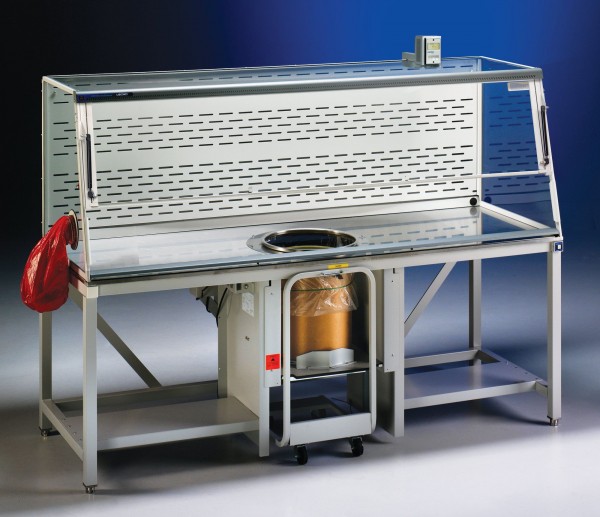Three major difficulties arise during the movement and packaging of bulk materials in powder form: abrasion, dust and waste.

Abrasion is a fundamental problem in bulk power material handling. Fine-sized powders such as lime or flour can damage machinery surfaces over time just as larger sized sands and gravels. Particle abrasion can erode poorly designed equipment that is unsuitable for the materials it is handling. Meanwhile, excess dust in a workplace can cause employee health problems and dangers from explosions or spontaneous combustion. These dangers can be compounded during manual handling of materials and equipment during any transfer process.
Surface hardening
One way of coping with abrasion problems is to pre-treat equipment surfaces with a hardening material. Nitriding is a method of producing a hardened surface on most steels. It increases both fatigue life of the metal and its corrosion resistance. When jets of nitrogen-rich gas such as ammonia impinge on the steel, it reacts to produce a hardened nitride compound on the surface. Another method is to use a spray or plasma coating on the surface of the equipment. The coatings may be metal carbide, metal ceramics, or polymers. They can coat pumps, pneumatic conveyor systems, mixers, rotary valves and screw conveyors, but any contact with the internal mechanisms of machinery should be avoided. The skill in protecting machinery surfaces comes in choosing a coating that will be harder than the materials under processing.
Dust and waste treatment
Butterfly and rotary valves are a simple solution to dust problems. Buttery fly valves, metal discs mounted on rods and rotary valves are easy to install and maintain and can be closed tightly to maintain in a dust free condition. One efficient valve variation is the split butterfly containment valve. This system is one of the safest ways of transferring products. It works like a butterfly valve that is divided in to two parts. An active part is attached to stationary equipment like a fixed vessel and a passive part attached to a mobile unit like an intermediate bulk container (IBC). During the handling process, the two halves dock together, work as a single unit and do not expose the operator to any release of material. It also minimises waste during the transfer.
Conclusion
Equipment for efficient bulk powder transfer should be constructed of hardened materials and incorporate valves that ensure no release of dust and waste. It improves operator safety and processing economics.
Janet Hanson writes articles on industrial design and materials handling. She has experience in this field gained from a variety of sources including www.guttridge.co.uk.
